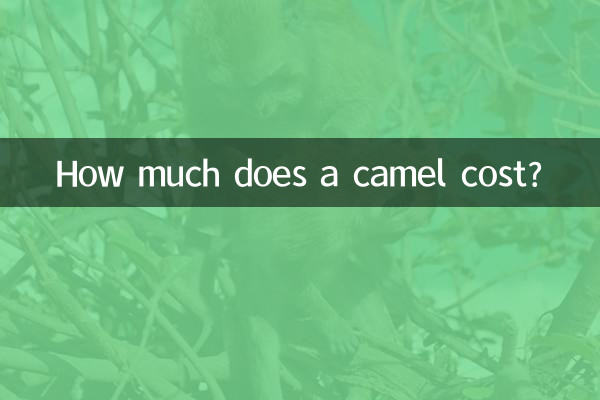How Much Does a Camel Cost: Revealing Market Trends and Breeding Costs
In recent years, camels have become a hot topic due to their unique value (such as transportation, milk production, tourism, etc.). This article will analyze the market price, breeding costs and industry trends of camels based on the hot content on the Internet in the past 10 days, and attach structured data for reference.
1. Camel market price analysis

The price of camels is greatly affected by breed, age, use and region. The following is recent market research data:
| camel type | age | Price range (RMB) | Main purpose |
|---|---|---|---|
| Bactrian camel | Adult (5-10 years old) | 20,000-50,000 | transportation, tourism |
| dromedary camel | Adult (4-8 years old) | 15,000-40,000 | milk production, competition |
| young camel | 1-3 years old | 8,000-20,000 | Breeding and cultivation |
| racing camel | 3-7 years old | 50,000-200,000 | competition, reproduction |
Note:The price of racing camels in the Middle East can reach millions, and domestic transactions are mainly practical.
2. Breeding costs and profits
The inputs for raising camels include purchase cost, feed, medical care and labor. Here are annual cost estimates:
| project | Cost (RMB/year) |
|---|---|
| Feed (forage + concentrate) | 3,000-6,000 |
| Medical epidemic prevention | 1,000-2,000 |
| Venue rental | 2,000-5,000 |
| Manual management | 10,000-20,000 |
| Total cost (single head) | 16,000-33,000 |
Profit sources include camel milk sales (about 30-50 yuan per liter), tourism rentals (average daily average of 200-500 yuan), etc. The payback period is about 3-5 years.
3. Industry hot spots and trends
1.The rise of camel milk industry:Due to its high nutritional value, camel milk products have become a new favorite in health food, driving the demand for female camels to grow.
2.Ecotourism needs:Camel riding projects in desert scenic spots are very popular, and there is a "camel rental shortage" in some areas.
3.Policy support:Inner Mongolia, Xinjiang and other places have introduced camel breeding subsidies to encourage large-scale development.
4. Purchase suggestions
1. Give priority to regular breeding farms and ensure health certificates and pedigree records.
2. Choose a breed according to the purpose - Bactrian camels are cold-resistant and suitable for the north, while dromedary camels are suitable for milk production.
3. Pay attention to industry exhibitions (such as Xinjiang Animal Husbandry Expo) to obtain the latest transaction information.
Conclusion
Camel prices are affected by multiple factors, and market demand and costs need to be comprehensively assessed before investment. With the development of the integration of specialty agriculture and culture and tourism, the camel economy may become a new entrepreneurial outlet.

check the details

check the details